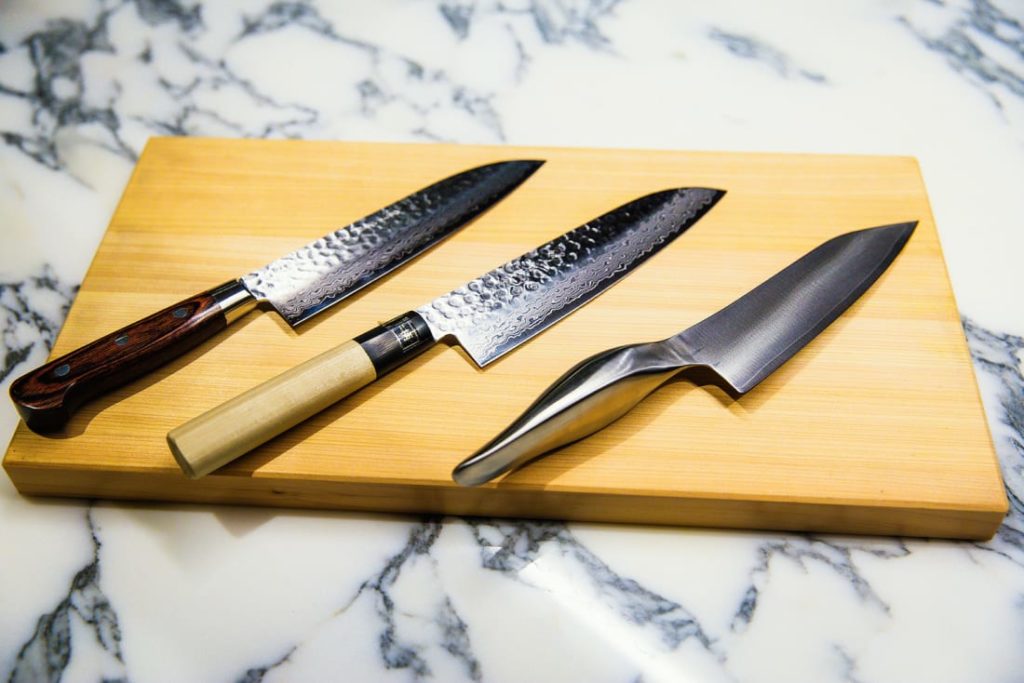For home cooking, “nakiriboto” is more suitable. Sharpen this knife on both sides, thus providing even slices of chopped vegetable. In shape, this knife is slightly modified in different regions of the country, for example, in Osaka – there are rounded corners on the knife, and in Tokyo, a knife of strictly rectangular shape. The blade, in any case, is black.
Professional chefs give preference to the type of “Kamikoto IG.” No changes in the shape of the tip depending on the region are done for these knives. Sharpening is performed only on one side, while there is separately left-hand sharpening (for left-handed people), and right-hand sharpening for the rest.
Sashimi botyo
There is also a separate group of knives that are used in the preparation of sashimi for cutting seafood, including fish, and this is “sashimi botё”. They are distinguished by a very thin and long blade, but in Japan you will not find a good cook who does not have a complete set of these knives, and such a set should include:
“Yanagiba” is intended for cutting land, milling fish. It has an interesting blade shape, similar to a willow leaf (this is what its name means in translation) with one-sided sharpening, a very thin and sharp edge. Designed for medium-sized fish, the length of the blade varies from 200 mm to 360 mm;
“Takohiki”, this knife is considered to be made specifically for cutting octopuses. Has one-sided, very thin sharpening. Blade length from 200 mm to 360 mm;
“Puffers” – the thinnest of all chef’s knives, and quite flexible. It differs in almost straight blade shape, and very sharp. It has blade length within 210 mm to 300 mm. This knife is specifically designed to separate puffer fish fillet (known for its inaccurate cutting, the meat is filled with nerve poison). Japan annually says goodbye to lovers of this dish who die after eating.
OrochiBoto and HanchoBoto
These are special knives for tuna and some other large fish species. “Botoshi” in literal translation means “the knife is very long”, it can reach a length of about two meters. This is only the length of the blade, the handle is an average of 30 cm. “Hanchobotё” is a completely similar knife, but half shorter. Both knives have high flexibility, so they can very well remove the meat from the bones. Such knives, as a rule, are not used in everyday life, they can be seen in the kitchens in restaurants or in the markets (with sellers of large fish).
A Japanese knife can have a blade, both with double-sided sharpening (completely symmetrical descents on both sides) and with one-sided. In case of one-sided sharpening, it is performed under the right or under the left hand, which does not cause problems if the chef is left-handed.
